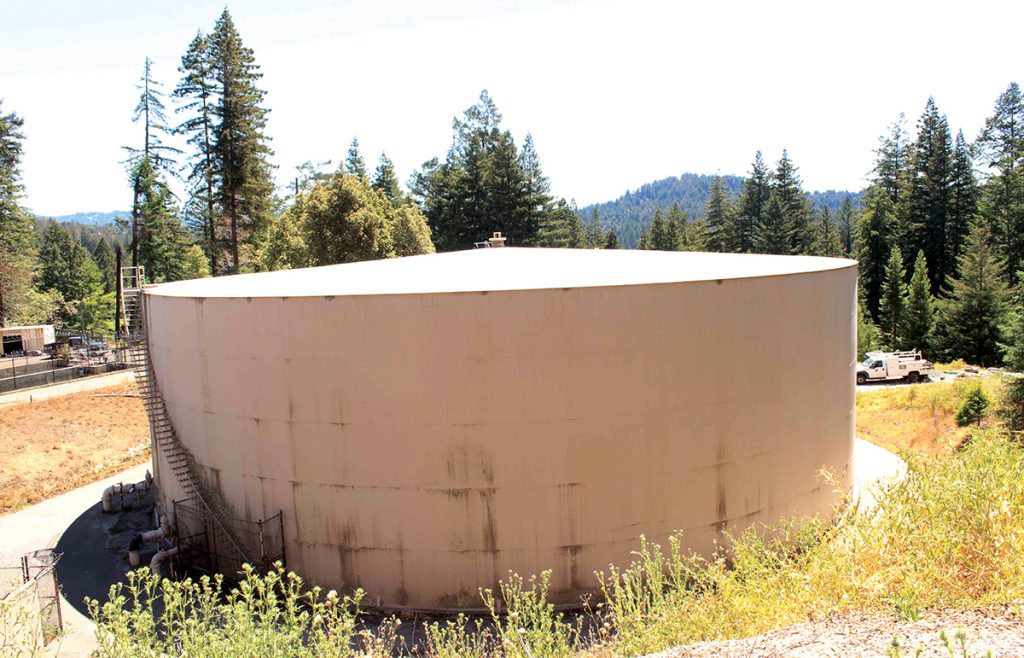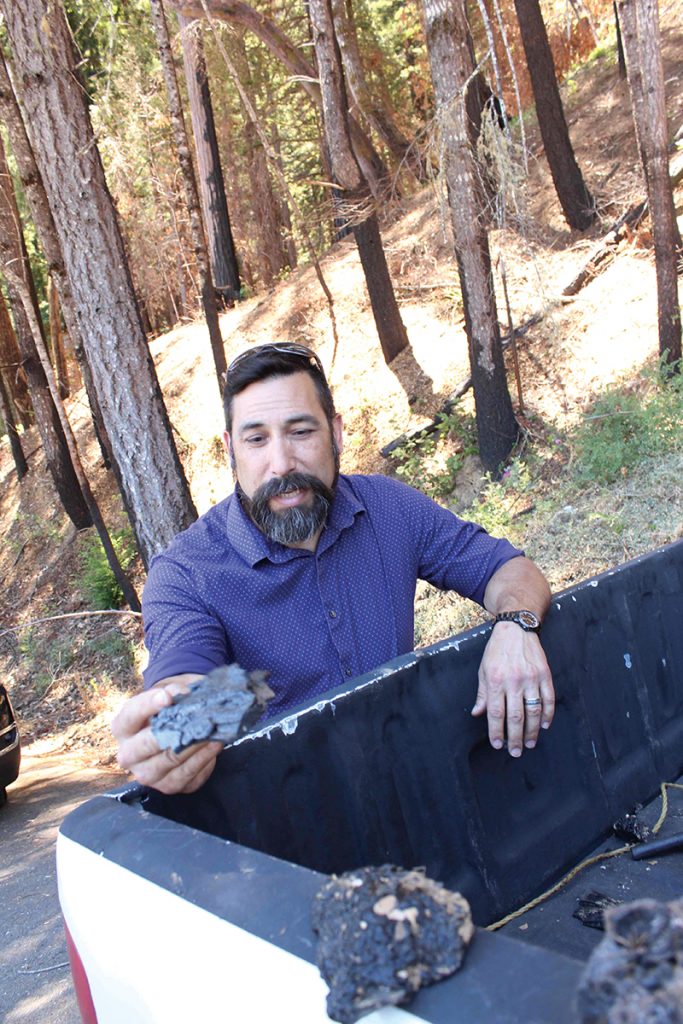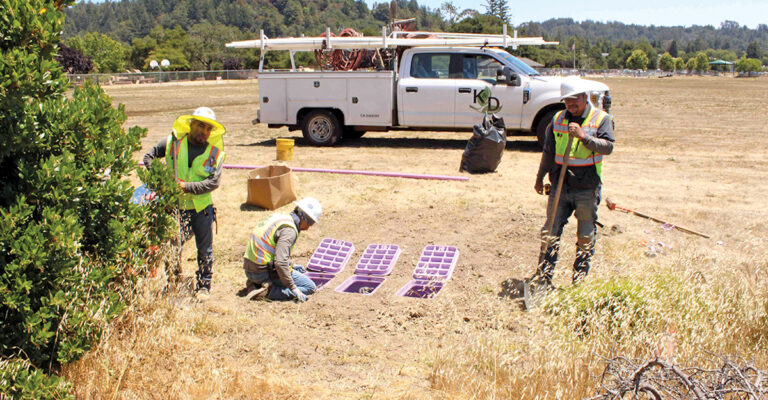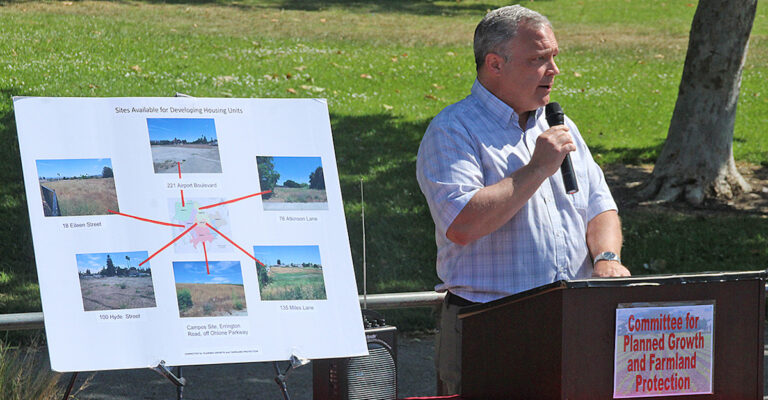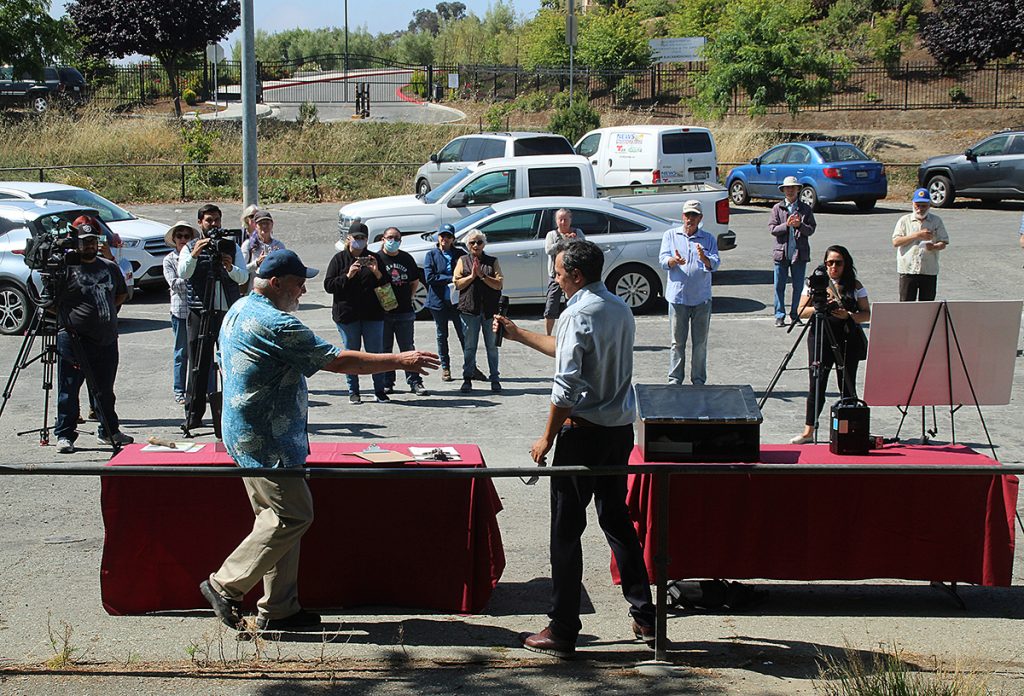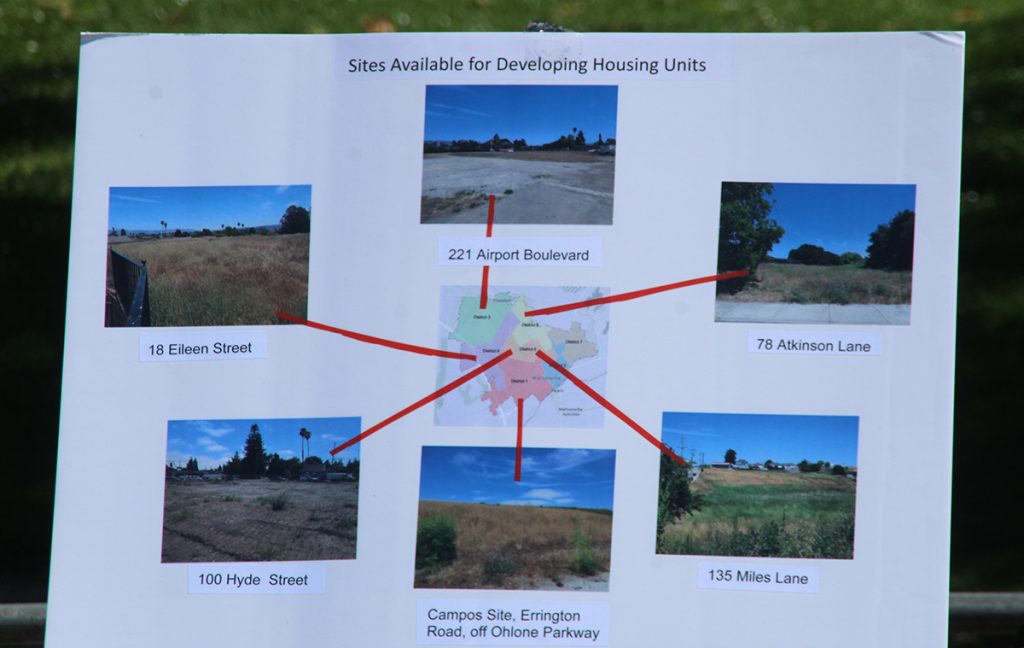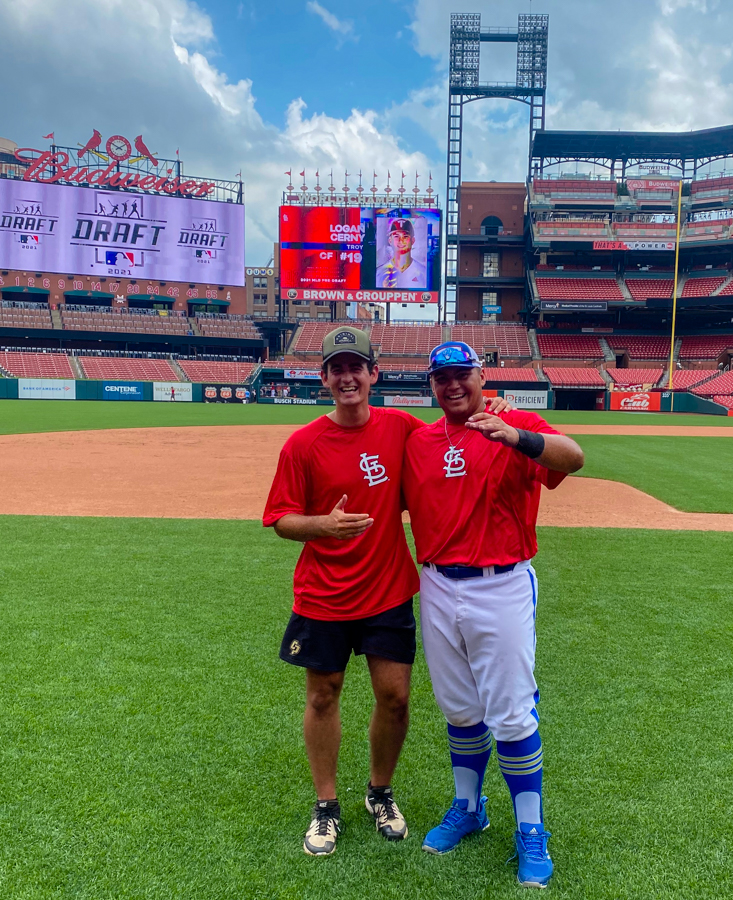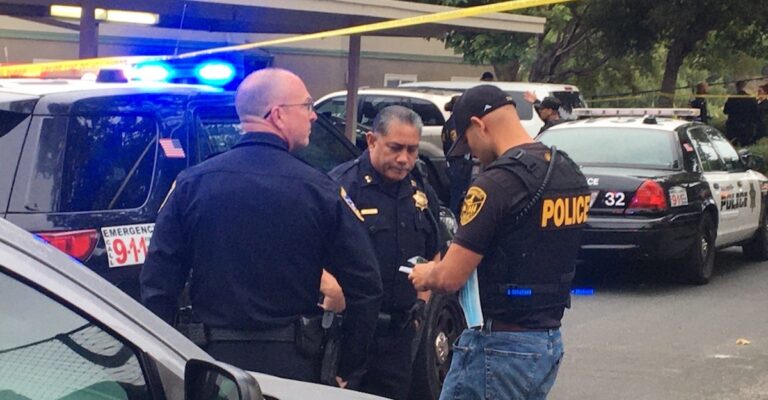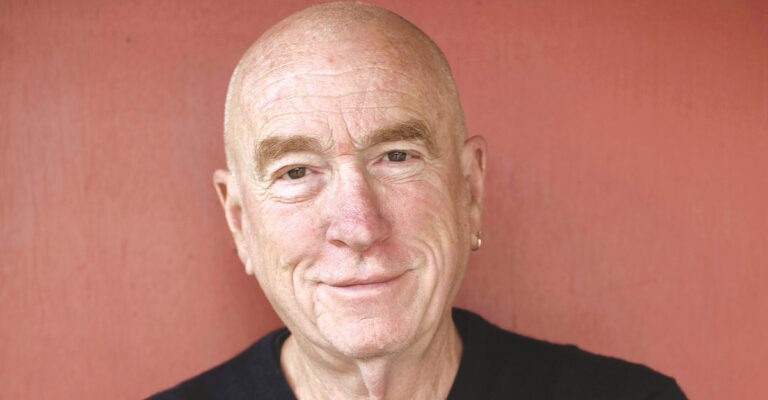A weekly guide to what’s happening.
ARTS AND MUSIC
BANFF CENTRE MOUNTAIN FILM VIRTUAL FESTIVAL All the programs! If you’ve been too busy getting after it outdoors, or just haven’t made the time yet, now’s your chance to catch all our Virtual World Tour Programs. Join us online for a mixed program of award winners from the 2020, 2019 and 2018 Banff Centre Mountain Film and Book Festivals. Catch up on missed films or relive some of the best that Banff has to offer. For more information and tickets, visit riotheatre.com or call 831-423-8209. Wednesday, July 14-Tuesday, July 20.
COMMUNITY DRUMMING WITH JIM GREINER IN PERSON Percussionist/Educator Jim Greiner will conduct the next in his monthly Third Friday series of community drumming sessions at the Inner Light Center in Soquel in-person from 6 to 7:30pm. The cost is $10. Masks and social distancing requirements will be honored. Jim makes it fun and easy for people from all walks of life to play drums and hand percussion to release stress, to uplift and energize yourself, and to reinforce positive life rhythms through percussion playing. Friday, July 16, 6-7:30pm. Inner Light Center, 5630 Soquel Drive, Soquel.
GREATER PURPOSE COMEDY NIGHT Every Friday night at Greater Purpose Brewing it’s the Greater Purpose Comedy Show hosted by DNA and Chree Powell. This show features the best of California comedy. The show is 90 minutes long; doors at 7pm, show at 7:30pm. Admission is $10 and we strongly suggest buying your tickets on Eventbrite in advance at eventbrite.com/e/greater-purpose-comedy-tickets-156589496399. Show is for ages 16+. Friday, July 16, 7-9pm. East Cliff Brewing Co., 21517 E Cliff Drive, Santa Cruz.
SANTA CRUZ SHAKESPEARE: THE AGITATORS This play tells the story of Frederick Douglass and Susan B. Anthony. Over the 45 volatile years they knew one another, they were friends, allies and adversaries. Their hopes and dreams for equality brought them to common ground and political battlefields. As agitators, they were not content to let either our nation or each other rest in complacency, and their respective fights for racial justice and gender equity continue to this day. Santa Cruz Shakespeare performances take place in The Audrey Stanley Grove (The Grove) at Upper DeLaveaga Park in Santa Cruz. With a “safety first” mantra, Santa Cruz Shakespeare has implemented numerous Covid-19 safety protocols for its 2021 season, including a revised seating layout that ensures adequate space and comfort for patrons. Due to limited capacity at the venue, people are encouraged to purchase tickets early. Tuesday, July 20, 2pm. The Grove at DeLaveaga Park, 501 Upper Park Road, Santa Cruz.
COMMUNITY
SEVENTH ANNUAL BOB MORESCO MEMORIAL BBQ Order of Sons & Daughters of Italy Watsonville Lodge’s 7th Annual Bob Moresco BBQ is Sunday, July 18 from noon-4pm. Tickets: adults $30; children 6-12 $10, children under six are free. Menu: BBQ half chicken, beans, salad, Italian bread roll and dessert. No host bar. Raffle. Contact Janey Malatesta Leonardich for more information or tickets. 831-722-7958. RSVP by Sunday, July 11, No tickets sold at event. Sunday, July 18, noon-4pm. Corralitos Padres, 33 Browns Valley Road, Corralitos.
DOWNTOWN SANTA CRUZ MAKERS MARKET Come on out and support local makers and artists at the Downtown Santa Cruz Makers Market every third Sunday of the month! We are now on the 1100 block of Pacific Ave. between Cathcart and Lincoln Streets near New Leaf and alongside so many amazing downtown restaurants. Support local and shop small with over 30 Santa Cruz County artists and makers! Don’t forget to stop in and visit the downtown merchants and grab a bite to eat from the downtown restaurants. Remember to social distance as you shop and wear your mask. If you’re not feeling well, please stay home. There will be hand sanitizing stations at the market and signs to remind you about all these things! Friendly leashed pups are welcome at this free event! Sunday, July 18, 10am-5pm. Downtown Santa Cruz Makers Market, Pacific Ave., Santa Cruz.
FREE URBAN CYCLING WORKSHOP – GO SANTA CRUZ Are you curious about how to ride your bike safely and confidently around town? Want to learn the rules of the road and how you fit in as a cyclist? How about gear selection, avoiding bike theft, summer riding, or choosing a low-traffic route? Get answers to these questions and more at this urban cycling workshop. Ecology Action staff will run through all the basics of urban cycling and guide curious cyclists of all levels and backgrounds. Free bike lights and helmets for attendees. For more information on the GO Santa Cruz program and available benefits, visit cityofsantacruz.com/gosantacruz. This free workshop is offered to all downtown Santa Cruz employees as part of GO Santa Cruz, a transportation program that provides downtown employees with commute alternatives to single-occupant car trips. Note, you must be an employee of a business in the Downtown Santa Cruz Parking District and enrolled in GO Santa Cruz on my.cruz511.org/s/gosantacruz. Thursday, July 15, noon-1pm.
GREY BEARS BROWN BAG LINE If you are able-bodied and love to work fast, this is for you! Grey Bears could use more help with their brown bag production line on Thursday and Friday mornings. As a token of our thanks, we make you breakfast and give you a bag of food if wanted. Be at the warehouse with a mask and gloves at 7am, and we will put you to work until at least 9am! Call ahead if you would like to know more: 831-479-1055, greybears.org. Thursday, July 15, 7am. California Grey Bears, 2710 Chanticleer Ave., Santa Cruz.
SALSA SUELTA FREE ZOOM SESSION Keep in shape! Weekly online session in Cuban-style Salsa Suelta for experienced beginners and up. May include mambo, chachacha, Afro-Cuban rumba, orisha, son montuno. No partner required, ages 14 and older. Contact to get the link; visit salsagente.com. Thursday, July 15, 7pm. Louden Nelson Community Center, 301 Center St., Santa Cruz.
GROUPS
CAREGIVER SUPPORT GROUP – VIA ZOOM Support groups create a safe, confidential, supportive environment or community and a chance for family caregivers to develop informal mutual support and social relationships as well as discover more effective ways to cope with and care for your loved one. Meeting via Zoom and phone. To register or questions please call 800-272-3900. Wednesday, July 14, 2pm. Alzheimer’s Association, 550 Water St., Santa Cruz.
ENTRE NOSOTRAS GRUPO DE APOYO Entre Nosotras support group for Spanish-speaking women with a cancer diagnosis. Meets twice monthly. Registration required: call Entre Nosotras at 831-761-3973. Friday, July 16, 6pm. WomenCARE, 2901 Park Ave., Suite A1, Soquel.
OVEREATERS ANONYMOUS All our OA meetings have switched to being online due to sheltering in place. Please call 831-429-7906 for meeting information. Do you have a problem with food? Drop into a free, friendly Overeaters Anonymous 12-Step meeting. All are welcome! Thursday, July 15, 1-2pm.
WOMENCARE ARM-IN-ARM WomenCARE ARM-IN-ARM Cancer support group for women with advanced, recurrent, or metastatic cancer. Meets every Monday at WomenCARE’s office. Currently on Zoom. Registration required, call WomenCARE at 831-457-2273. All services are free. For more information visit womencaresantacruz.org. Monday, July 19, 12:30pm.
WOMENCARE MINDFULNESS MEDITATION Mindfulness Meditation for women with a cancer diagnosis. Meets the first and third Friday, currently on Zoom. Registration required, call WomenCARE 831 457-2273. Friday, July 16, 11am-noon.
WOMENCARE TUESDAY SUPPORT GROUP WomenCARE Tuesday Cancer support group for women newly diagnosed and through their treatment. Meets every Tuesday currently on Zoom. Registration required, call WomenCARE 831-457-2273. Tuesday, July 20, 12:30-2pm. WomenCARE, 2901 Park Ave., Suite A1, Soquel.
WOMENCARE: LAUGHTER YOGA Laughter yoga for women with a cancer diagnosis. Meets every Wednesday, currently via Zoom. Registration required, call WomenCARE at 831-457-2273. Wednesday, July 14, 3:30-4:30pm.
OUTDOOR
BUILDING WITH PURPOSE PART ONE: PERMANENT SUPPORTIVE HOUSING 101 Housing Matters is building a five-story permanent supportive housing building on our campus, here in Santa Cruz County. This building will include 120 new units of low-income housing for people experiencing chronic homelessness as well as an expanded recuperative care center and medical clinic. Whew! That’s a lot of jargon. Let’s break it down…in part one of this two-part webinar series, Tom Stagg, Director of Programs, and Evyn Simpson, Assistant Director of Programs, will walk you through permanent supportive housing as a solution to homelessness and why this approach works. More information at eventbrite.com/e/building-with-purpose-part-1-permanent-supportive-housing-101-tickets-145935736717. Tuesday, July 20, Noon-1pm.
CASFS FARMSTAND Organic vegetables, fruit, herbs and flowers are sold weekly at the CASFS Farmstand, starting June 15 and continuing through Nov. 23. Proceeds support experiential education programs at the UCSC Center for Agroecology & Sustainable Food Systems. Friday, July 16, noon-6pm. Tuesday, July 20, noon-6pm. Cowell Ranch Historic Hay Barn, Ranch View Road, Santa Cruz.
HISTORIC RANCH GROUND TOUR Discover what life was like a century ago on this innovative dairy ranch. This hour-long tour includes the 1896 water-powered machine shop, barns and other historic buildings. The vehicle day-use fee is $10. For more information, call 831-426-0505. Spaces are limited and early pre-registration is recommended. Attendees are required to self-screen for Covid-19 symptoms when pre-registering. Masks and social distancing are also required at all programs. To register, visit santacruzstateparks.as.me/schedule.php. Saturday, July 17, 1pm. Sunday, July 18, 1pm. Wilder Ranch State Park, 1401 Coast Road, Santa Cruz.
NEW BRIGHTON JUNIOR RANGERS This fun one-hour program offers kids, ages 7-12, an opportunity to earn prizes while learning about birds, sea life, and local park animals, playing games, and doing arts and crafts. Meet at the campground Ramada. For more information, call 831-685-6444. Spaces are limited and early pre-registration is recommended. Attendees are required to self-screen for Covid-19 symptoms when pre-registering. Masks and social distancing are also required at all programs. To register, visit santacruzstateparks.as.me/schedule.php. Friday, July 16, 3pm. Saturday, July 17, 3pm. New Brighton Beach, 1500 Park Ave., Capitola.
NEW BRIGHTON LITTLE RANGERS Any and all 3-6 year-olds are invited to play games, listen to stories and songs, and learn about nature! Smiles, laughter, and good times abound at this program, and it’s a fantastic way to begin your morning in the park. Meet at the campground Ramada. For more information, call 831-685-6444. Spaces are limited and early pre-registration is recommended. Attendees are required to self-screen for Covid-19 symptoms when pre-registering. Masks and social distancing are also required at all programs. To register, visit santacruzstateparks.as.me/schedule.php. Friday, July 16, 11-11:30am. Saturday, July 17, 11-11:30am. New Brighton Beach, 1500 Park Ave., Capitola.
PARADIGM SPORT SUMMER BASEBALL CAMP Come to the Paradigm Sport baseball camp and experience the best baseball camp on the Central Coast. Over the course of a fun week with friends and teammates, kids get coached up by our staff of current and former pros on the skills, knowledge and mental approach they need to be strong, all-around players. Areas of focus include hitting, pitching, infield and outfield play, base running and more. At Paradigm Sport, our goal is to provide young players in and around Santa Cruz County with the highest-quality baseball instruction possible. Our summer camp is one of our favorite ways to do it! Wednesday, July 14, 9am-2pm. Thursday, July 15, 9am-2pm. Friday, July 16, 9am-2pm. Paradigm Sport, 120 Dubois St., Santa Cruz.
SLIM CHANCE OUTDOORS EVENT AT HARVEY WEST PARK Hilarious and inspiring family entertainment, Slim Chance’s Circus of Possibilities is the perfect blend of thrills and skills to delight audiences of all ages. This 30-minute show combines classic circus, vaudeville and slapstick comedy into a multitude of magical moments and surprises. Saturday, July 17, 2-3pm. Harvey West Park, 326 Evergreen St., Santa Cruz.
SUNSET BEACH BOWLS Experience the tranquility, peace and calmness as the ocean waves harmonize with the sound of Crystal Bowls raising your vibration and energy levels. Every Tuesday one hour before sunset at Moran Lake Beach. Call 831-333-6736 for more details. Tuesday, July 20, 7:15-8:15pm. Moran Lake Park & Beach, East Cliff Drive, Santa Cruz.
YOU PICK ROSES We are growing over 300 roses, deeply fragrant, lush and in every color, and we want to share them with you! Get out of the house and enjoy cutting a bucket of roses for your own pleasure or to share with family and friends. Once you have made a purchase, you will be sent a calendar link to pick a time for your reservation and directions to our farm in Watsonville. Visit birdsongorchards.com/store/you-pick-roses for more information. Friday, July 16, 11am. Sunday, July 18, 11am.
